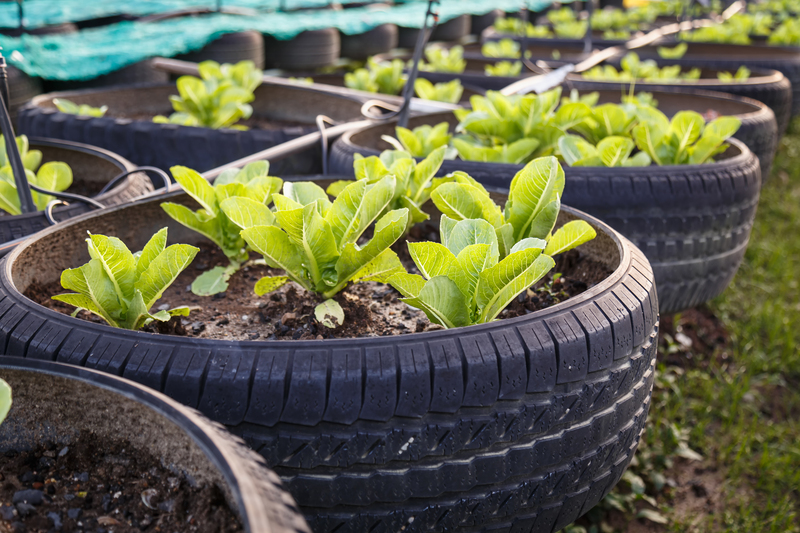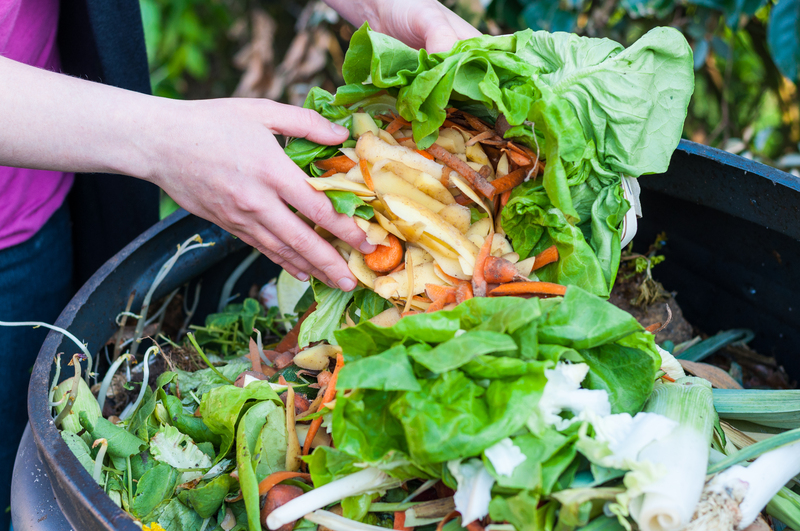Turning Kitchen Waste Into Art With Pots and Pans: Creative Ways to Upcycle
Are you looking for new ways to reduce food waste and transform your kitchen scraps into something beautiful? You're in the right place! Welcome to the world where creativity meets sustainability--where turning kitchen waste into art with pots and pans isn't just possible, but rewarding and fun. In this comprehensive article, we'll journey through the inventive world of upcycling, exploring how you can use your forgotten leftovers and old cookware to breathe fresh life into your home and everyday environment.
Why Transform Kitchen Waste Into Art?
Our kitchens are bustling centers of creativity and nourishment, but they're also responsible for producing significant quantities of food waste--from vegetable peels to coffee grounds. Rather than tossing these materials, we can give them a second life. Upcycling kitchen scraps with pots and pans isn't just eco-friendly; it's a wonderful way to foster creativity, save money, and even enhance your home decor.
- Sustainability: Upcycling reduces landfill waste and lowers your carbon footprint.
- Creativity: Crafting your own art pieces sparks ingenuity.
- Budget-friendly: Use what you have--no need for expensive art supplies.
- Personalized Decor: Home accents with a unique story.
How Kitchen Waste and Old Cookware Become Creative Mediums
Imagine transforming a rusty pan into an elegant wall installation, or using onion skins for rich, natural dyes in handmade paper. The combination of kitchen scraps and unused cookware offers a vast palette of colors, textures, and forms--perfect for both beginner and seasoned artists.

Innovative Projects for Turning Kitchen Waste Into Art
Ready to experiment? Here are engaging, step-by-step projects that make kitchen waste art both accessible and exciting. Bonus: Most require only everyday items such as pots and pans, ensuring anyone can participate!
1. Vegetable Dye Artworks Using Pots and Pans
Many fruits and vegetables are packed with vivid pigments. With just water, a few scraps, and a saucepan, you can create homemade natural dyes for watercolors, fabric, or paper.
- Red/Pink: Beet skins, pomegranate peels
- Yellow: Onion skins, turmeric root
- Purple/Blue: Red cabbage leaves, blueberry remnants
- Green: Spinach stems, avocado peels
Instructions
- Place your chosen scraps into a pot or pan with just enough water to cover.
- Simmer for 30-60 minutes, checking regularly to achieve the desired intensity.
- Strain solids, let the liquid cool, and store in glass jars.
- Use with paintbrushes on heavy paper for beautiful, food-safe watercolors or even dip-dye fabric for gentle, earthy tones.
Tip: Experiment with layering and mixing colors from different produce. You'll be amazed at the vibrant results achieved simply by turning kitchen waste into art with old pots and pans.
2. Compostable Sculpture--A Zero-Waste Masterpiece
Embrace ephemeral beauty by turning food scraps and biodegradable kitchen waste into sculptural forms. For this, use cleaned vegetable peels, eggshells, coffee grounds, or citrus rinds to craft art that can eventually be composted back into your garden.
- Gather an assortment of colorful, interestingly shaped scraps.
- Arrange them artistically on baking trays or roasting pans, securing as needed with bamboo skewers or natural twine.
- Display your work temporarily or photograph it for a lasting memory before composting.
Not only does this process delight the senses, but it also closes the loop between art and sustainability--a true reflection of the potential in turning kitchen waste into art with household cookware.
3. Hanging Planters Made from Old Pots and Pans
Don't let chipped saucepans or dented frying pans go to waste! Transform them into whimsical hanging planters that double as eco-friendly artwork.
- Thoroughly clean your old pan or pot.
- Drill a few drainage holes in the base (most standard cookware can handle this).
- Paint or decorate the outside with leftover natural dyes or acrylic paints for added flair.
- Thread strong cord or macrame through holes in the handle to create a hanging loop.
- Fill with soil and your choice of herbs or succulents--and hang in your kitchen or balcony!
Bonus idea: Paint the names of your plants on the sides using natural dyes for a rustic, personalized touch.
4. Kitchen Scrap Collages
Create stunning mixed media collages using both kitchen waste (like dried citrus slices, coffee grounds, onion skin, and pressed leaves) and discarded utensils or pan lids as the frame or backing.
- Dry and flatten appealing scraps by pressing them under a heavy book.
- Arrange them on a sturdy surface, such as the bottom of a pan or a wooden cutting board you no longer use.
- Secure with non-toxic glue or homemade flour paste.
- Finish with a light seal of natural beeswax or clear eco-varnish (optional).
Let your imagination run wild--these kitchen waste art collages are perfect for display or as eco-friendly gifts!
How to Prepare Kitchen Waste for Artistic Projects
Not all kitchen waste is created equal. To ensure your upcycled art stands the test of time (or at least its exhibition!), follow these best practices:
- Clean thoroughly: Rinse and dry all scraps to avoid mold growth or unwanted odors.
- Preserve color: Steam or blanch delicate leaves, and sun-dry peels or citrus slices for vibrant, long-lasting hues.
- Dry completely: Dehydrate or oven-dry thicker pieces to prevent decay.
- Store wisely: Keep your prepared materials in airtight jars or containers until you're ready to use them.
Creative Uses for Every Type of Kitchen Scrap
Vegetable and Fruit Peels
Turn carrot tops, potato skins, apple peels, and beetroot offcuts into colorful mosaics or compostable jewelry. Dry slices can become unique pendants, while layered peels work as nature's own origami paper.
Coffee Grounds and Tea Bags
After your morning brew, don't throw out spent coffee grounds or steeped tea bags. Use grounds for textured, earthy paintings (mix with a small amount of flour paste for "paint"), or incorporate dried, stained tea bags as a natural paper for collages.
Eggshells and Nut Shells
Eggshells, once cleaned and dried, become beautiful mosaic pieces or can be ground into natural, chunky pigments for textural paintings. Nut shells--like walnut halves--make quirky, earth-themed mini sculptures or frames.
Old Pots, Pans, and Utensils
Don't limit yourself to food scraps. Those scratched pans and bent forks can be transformed into canvases, frames, sculptures, or plant holders, blending artistic upcycling with hyperlocal recycling.
Benefits of Kitchen Waste Upcycling
- Decreases landfill load: Every piece of material repurposed is one less polluting item in our environment.
- Encourages mindful living: Cultivates a greater awareness of consumption and waste.
- Supports local ecosystems: Finished artworks, when compostable, return nutrients to your garden or community.
- Enhances well-being: The act of crafting with your hands is relaxing and meditative--a therapeutic benefit for all ages.
Getting Your Family Involved in Kitchen Waste Art
Creativity is contagious--making art from kitchen scraps is a perfect family project. Children love the vibrant colors, odd shapes, and tactile experience, while adults will appreciate the sustainable twist.
Tips for Success:
- Choose age-appropriate tasks--kids can arrange peels or help mix natural dyes under supervision.
- Emphasize safety: Always handle sharp objects and hot pans with care.
- Share the story: Talk about where your materials came from, and how you're helping the planet.
- Encourage creativity--there are no mistakes in upcycled kitchen pan art!
Showcasing and Preserving Your Kitchen Waste Artwork
Display Inspiration
- Mount pan collages on wall hooks for a kitchen gallery wall.
- Use decorated pans as table centerpieces.
- Gift compostable art to eco-conscious friends.
- Share your projects online to inspire others!
Longevity Tips
While much kitchen waste art is naturally ephemeral, you can extend its lifespan by:
- Applying natural sealants (like beeswax or soy wax) for preserved peels or leaves.
- Keeping pieces out of direct sunlight to avoid color fading.
- Placing art in dry, cool places to minimize decay.
The Growing Community for Kitchen Waste and Cookware Art
Around the world, artists and sustainability advocates are embracing creative kitchen waste upcycling. From workshops and competitions to museum exhibits, there's a thriving community--and you can be part of it!
- Join local eco-art groups: Learn new techniques and share your creations.
- Follow hashtags: Try #KitchenWasteArt, #UpcycledCookware, and #EcoArt on social media.
- Host a swap or upcycling day: Trade materials and skills with neighbors or friends.
Frequently Asked Questions
- Is it safe to use all types of kitchen waste for art?
Most vegetable, fruit, and grain-based scraps are safe. Avoid using meat, dairy, or anything with mold or decay. - What if my art starts to smell or attract bugs?
Dry all scraps thoroughly before use, work in well-ventilated areas, and compost anything that shows signs of spoilage. - Are old non-stick pans safe for projects?
For food safety, avoid using degraded non-stick surfaces. For non-edible art, they are fine if handled safely. - Can I sell art made from food scraps and pans?
Yes! Many crafters sell upcycled art at local markets or online. Just be clear about the materials and longevity of your work.

Conclusion: A Revolution in Home Creativity
Turning kitchen waste into art with pots and pans is not only possible--it's a movement. By embracing the daily leftovers in your kitchen, you're joining a global generation of eco-conscious creators who value beauty, sustainability, and ingenuity. With every painted pan, sculpted peel, or compostable masterpiece, you're rewriting the narrative of waste into one of hope and inspiration.
Dare to try it today--your next work of art may already be in your kitchen!
Further Reading and Inspiration
- Eco-Art Therapy by Julia K. Weinandy
- The Creative Kitchen: Food Waste Edition by Karen Farrell
- We Are One Planet - Kitchen Waste Upcycling Projects
- Pinterest - Kitchen Waste Art Ideas
Ready to transform your approach to waste--one pot, pan, and peel at a time? Start your kitchen waste art journey now!